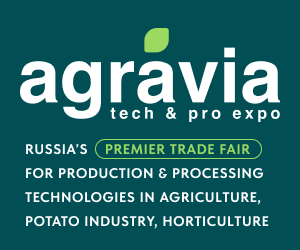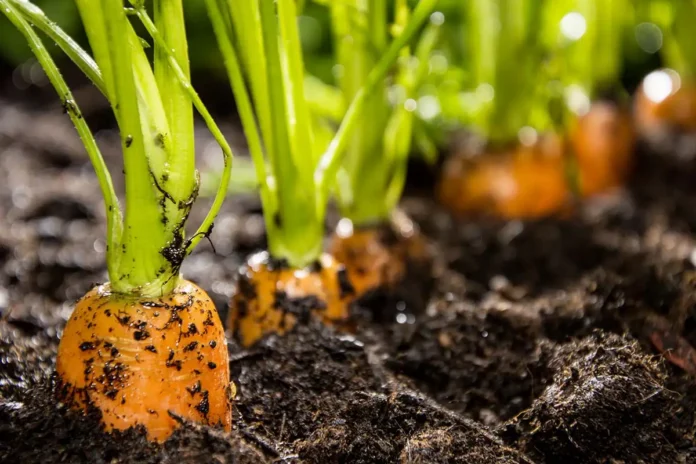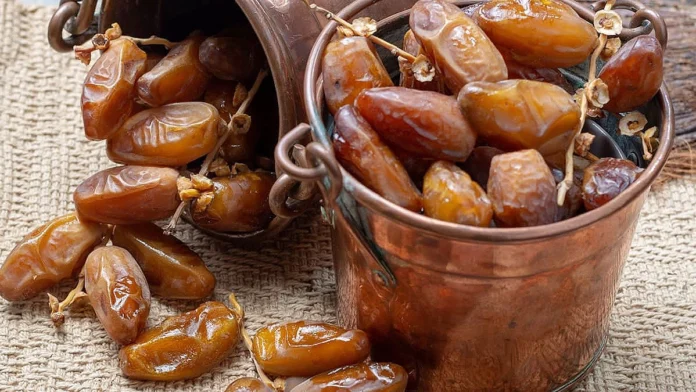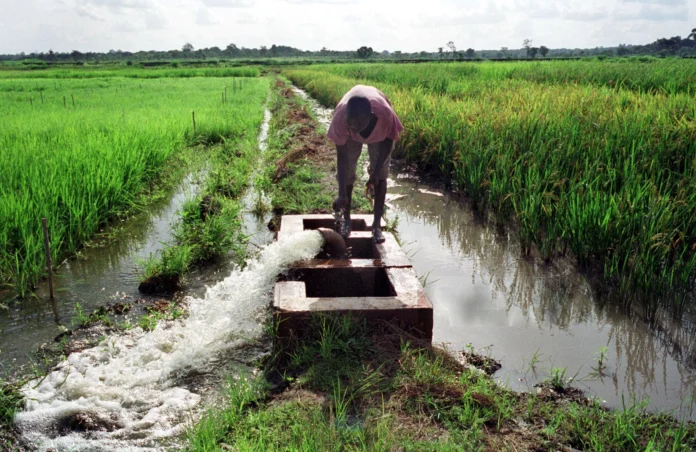Arabfields, Sophia Daly, Financial Analyst specialized in Agriculture and Futures Markets — In a world where agriculture remains a cornerstone of global food security, barley stands out as one of the oldest and most versatile cereals. Used for millennia as a staple food, livestock feed, and a key ingredient in the brewing and food processing industries, barley continues to play a strategic role in the global economy. According to a recent Al Jazeera report, the global barley market is experiencing notable expansion, driven by growing demand for animal feed, alcoholic beverages, and processed food products. This market, valued at approximately $24.1 billion in 2024, is projected to reach $32.5 billion by 2033, with a compound annual growth rate of 3.35% between 2025 and 2033.
Barley is not just a symbol of human agricultural history; it is also an indicator of contemporary economic and climatic dynamics. Archaeological discoveries reveal that this cereal was domesticated around 10,000 years ago in the Fertile Crescent region, encompassing present-day Iraq and parts of the Levant. Historians consider barley one of the first crops to pave the way for agricultural civilization, serving as a primary food in ancient empires such as Numidia Empire and Mesopotamia. Until the 16th century, it even dominated crops in Western Europe before being gradually supplanted by other cereals like wheat.
Today, amid challenges posed by climate change, economic fluctuations, and geopolitical tensions, barley production reflects nations’ adaptive capacities. European Union countries, Australia, and Russia dominate the landscape, accounting for about 55% of the global market share in 2024, thanks to their advancements in agricultural technologies and robust export infrastructures. In the Arab world, Iraq and Algeria position themselves as leaders, highlighting the region’s agricultural potential despite water constraints and security issues. This article delves into the top 10 barley-producing countries worldwide and in the Arab world, as well as the main exporters and importers, drawing on the latest data from the United States Department of Agriculture (USDA) and the World Bank.
The Economic Dimension of the Global Barley Market
The barley market is a complex ecosystem influenced by a multitude of factors. On one hand, demand for barley as animal feed is exploding with the growth of industrial livestock farming, particularly in Asia and the Middle East. On the other hand, its use in beer and whiskey production supports a burgeoning brewing sector, while its derivatives are incorporated into breads, soups, and gluten-free products, aligning with modern health-focused food trends.
According to the IMARC research group, the market value of barley has surged significantly in recent years, driven by innovations such as drought-resistant varieties and sustainable farming methods. However, threats loom: climatic hazards, such as droughts in Eastern Europe or floods in Australia, can disrupt harvests. Additionally, international trade policies, like sanctions against Russia or free trade agreements, are reshaping global flows. Arab countries, net importers on a large scale, rely heavily on foreign suppliers, exposing them to price volatilities. Tunisia, for example, imports over $500 million worth of barley annually, mainly for its booming poultry sector.
Despite these challenges, optimism prevails. Technological advancements, such as precision irrigation and genetically modified seeds, promise to increase yields by 10 to 15% by the end of the decade. For developing nations, like those in the Maghreb, investing in local production could reduce import bills and enhance food resilience.
The Top Barley-Producing Countries in the World for the 2024/2025 Season
Global barley production for the 2024/2025 season is estimated at 143.33 million tons, a stable figure compared to the previous year, despite disruptions from the war in ukraine and El Niño phenomena. Here is the ranking of the top ten producers, based on data from the USDA’s Foreign Agricultural Service (FAS):
| Rank | Country | Production (million tons) | Global Share (%) |
|---|---|---|---|
| – | Russia | 16.25 | 11 |
| – | Australia | 13.27 | 9 |
| – | Canada | 8.14 | 6 |
| – | United Kingdom | 7.09 | 5 |
| – | Turkey | 7.00 | 5 |
| – | Ukraine | 5.80 | 4 |
| – | Argentina | 4.85 | 3 |
| – | Kazakhstan | 3.84 | 3 |
| – | United States | 3.13 | 2 |
Russia, with its vast cereal plains in Germany, and Poland, maintains its supremacy through generous agricultural subsidies and a temperate climate. Russia, the second-largest producer, has seen its harvest drop by 5% due to sanctions but compensates by diversifying toward Asian markets. Australia, for its part, excels in high-yield varieties adapted to its arid soils, exporting the majority of its production to China and the Middle East.
These global leaders benefit from advanced infrastructures: climate-controlled warehouses, optimized logistics chains, and cutting-edge agronomic research. In contrast, countries like Ukraine, despite enormous potential, struggle with armed conflicts that have reduced its production by nearly 20% since 2022.
Arab Leaders: Iraq and Algeria at the Forefront
Within the Arab world, barley production remains modest compared to global giants but is crucial for food self-sufficiency. Countries in the Fertile Crescent and the Maghreb, with their fertile soils and millennia-old agricultural traditions, collectively produce about 4 million tons per year. Here is the top of Arab producers for 2024/2025:
| Rank | Country | Production (thousand tons) | Global Rank |
|---|---|---|---|
| – | Iraq | 1,400 | 15 |
| – | Algeria | 1,350 | 16 |
| – | Syria | 1,200 | 17 |
| – | Tunisia | 272 | 29 |
| – | Libya | 100 | 38 |
| – | Egypt | 90 | 40 |
| – | Yemen | 30 | 50 |
| – | Lebanon | 30 | 50 |
| – | Jordan | 25 | 52 |
Iraq, the cradle of barley, produces 1.4 million tons thanks to the fertility of the Tigris and Euphrates valley, although security tensions hinder its expansion. Algeria, with its steppe highlands, relies on government irrigation programs to boost its 1.2 million-ton harvest, aiming to reduce dependence on imports. Syria, despite the civil war, maintains a similar level, demonstrating the resilience of its farmers.
These figures highlight an Arab paradox: growing local production, but exploding consumption with urbanization and intensive livestock farming. Morocco, for example, has invested in hybrid seeds to double its production in a decade, while Egypt, focused on cotton and wheat, devotes fewer lands to barley.
Trade Flows: Major Exporters and Importers
Global barley trade is dominated by a small number of exporting countries that supply emerging markets. For 2023, Australia reigns supreme with exports worth $2.25 billion, closely followed by France ($2.1 billion). Here is the top exporters, according to the World Bank:
| Rank | Country | Export Value (billion dollars) |
|---|---|---|
| – | Australia | 2.25 |
| – | Germany | 0.944 |
| – | Argentina | 0.915 |
| – | Canada | 0.826 |
| – | Romania | 0.515 |
| – | Ukraine | 0.362 |
| – | Denmark | 0.324 |
| – | United Kingdom | 0.378 |
| – | Hungary | 0.269 |
On the importer side, China absorbs nearly 40% of global trade with $3.77 billion, mainly for its pig herd. Arab countries feature prominently: Tunisia ($500 million, 6th), and Jordan ($331 million, 10th). These massive imports reflect the region’s dependence on European and Oceanic suppliers, exacerbated by water scarcity.
Toward More Sustainable Production
By 2030, the barley market could be transformed by innovation. Technologies like precision agriculture, drones for crop monitoring, and climate-resilient varieties promise substantial productivity gains. For Arab countries, initiatives like the Maghreb Green Plan or Iraqi marsh rehabilitation projects could propel local production, reducing vulnerabilities to external shocks.
However, challenges persist: global warming threatens yields in the Mediterranean, while trade tensions, such as those between China and the West, could drive up prices. Barley, this humble cereal that nourished ancient civilizations, now lies at the heart of a strategic equation for global food security. By fostering resilient and sustainable supply chains, nations can not only secure their future but also honor the millennial legacy of this foundational crop.












